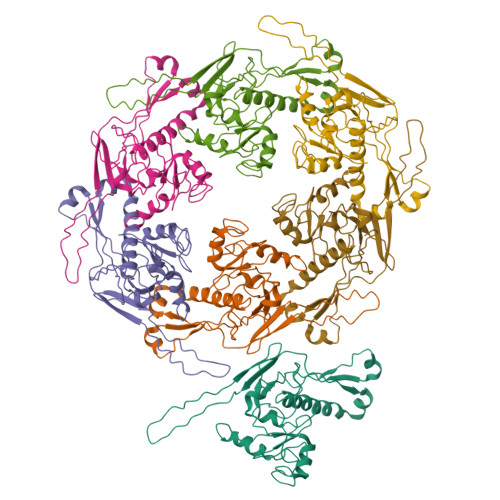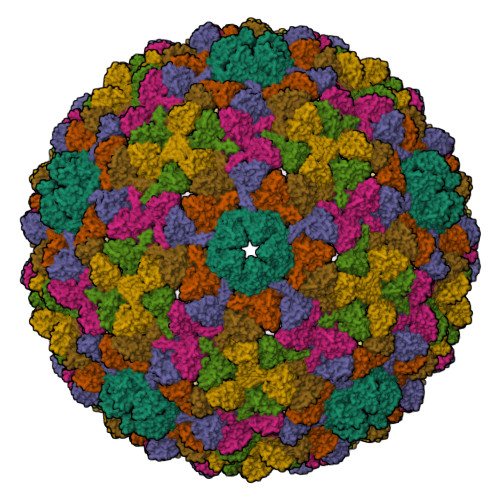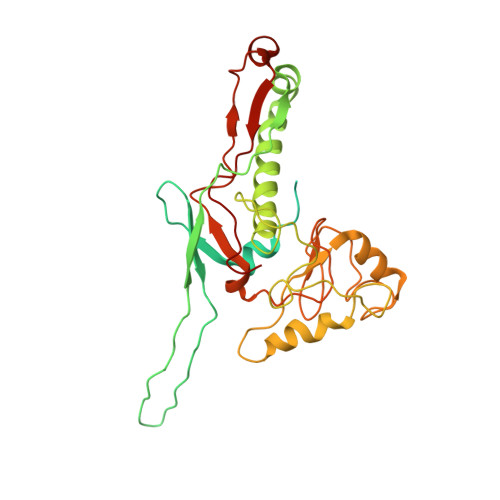Molecular rearrangements involved in the capsid shell maturation of bacteriophage T7.
Ionel, A., Velazquez-Muriel, J.A., Luque, D., Cuervo, A., Caston, J.R., Valpuesta, J.M., Martin-Benito, J., Carrascosa, J.L.(2011) J Biological Chem 286: 234-242
- PubMed: 20962334
- DOI: https://doi.org/10.1074/jbc.M110.187211
- Primary Citation of Related Structures:
2XVR, 3IZG - PubMed Abstract:
Maturation of dsDNA bacteriophages involves assembling the virus prohead from a limited set of structural components followed by rearrangements required for the stability that is necessary for infecting a host under challenging environmental conditions. Here, we determine the mature capsid structure of T7 at 1 nm resolution by cryo-electron microscopy and compare it with the prohead to reveal the molecular basis of T7 shell maturation. The mature capsid presents an expanded and thinner shell, with a drastic rearrangement of the major protein monomers that increases in their interacting surfaces, in turn resulting in a new bonding lattice. The rearrangements include tilting, in-plane rotation, and radial expansion of the subunits, as well as a relative bending of the A- and P-domains of each subunit. The unique features of this shell transformation, which does not employ the accessory proteins, inserted domains, or molecular interactions observed in other phages, suggest a simple capsid assembling strategy that may have appeared early in the evolution of these viruses.
Organizational Affiliation:
Department of Macromolecular Structure, Centro Nacional de Biotecnología, Consejo Superior de Investigaciones Científicas, Darwin 3, Cantoblanco, 28049 Madrid, Spain.
















